A few pictures from today, first of some of the smaller birds…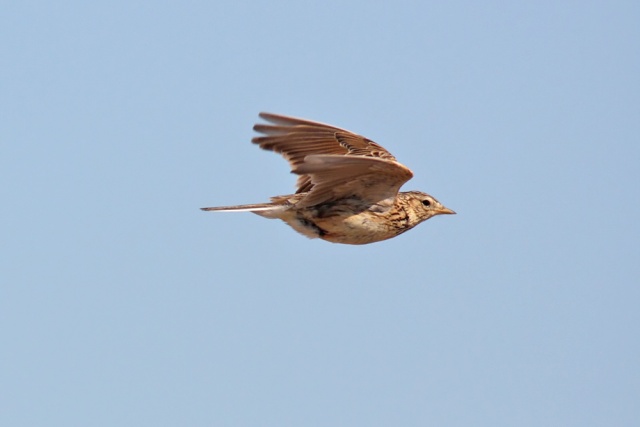 Skylark, this morning
Skylark, this morning
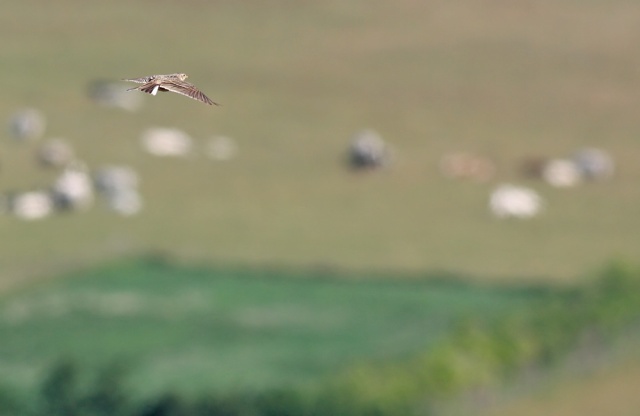 Skylark hovering over a field (the distant blobs are sheep)
Skylark hovering over a field (the distant blobs are sheep)
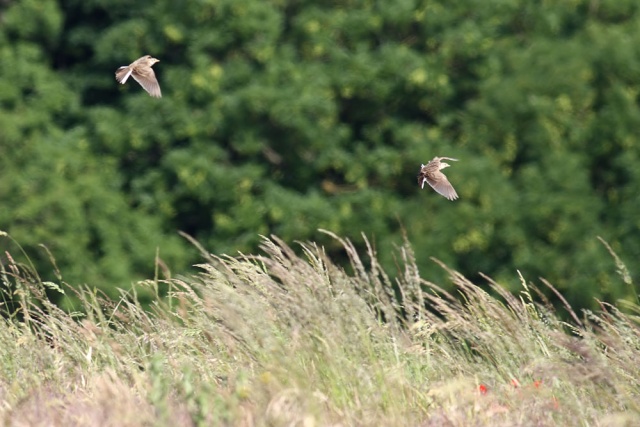 A pair of skylarks hovering just above their landing site
A pair of skylarks hovering just above their landing site
And a couple of shots that I finally managed to snare today…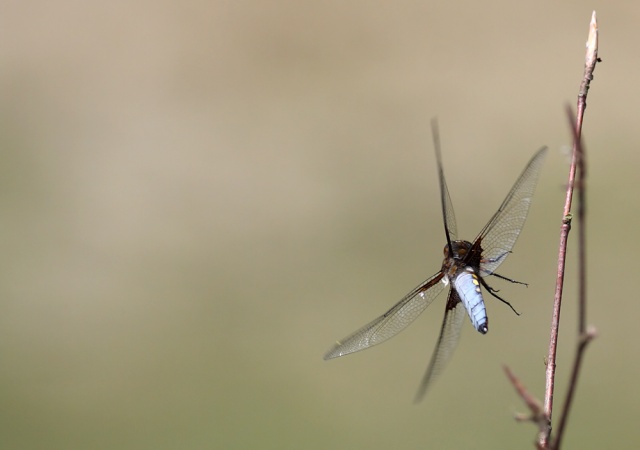 A male broad bodied chaser on the wing (just!)
A male broad bodied chaser on the wing (just!)
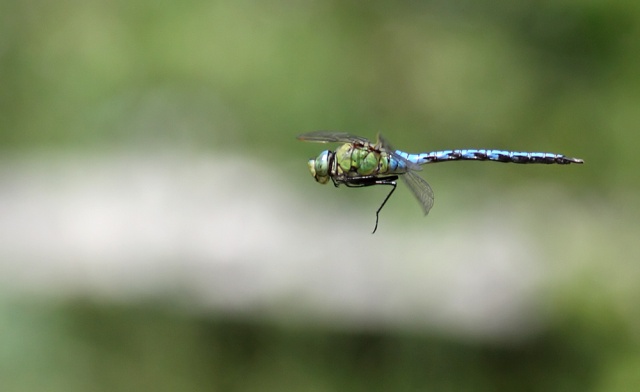 An emperor dragonfly on the wing (more than 'just')
An emperor dragonfly on the wing (more than 'just')
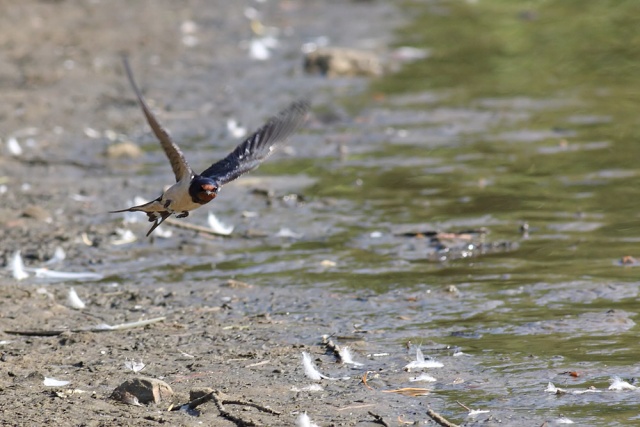 Swallow swooping over a pond
Swallow swooping over a pond
I used the EF 400mm f/5.6L USM prime lens for all the above. What it lacks in flexibility compared with the 100-400 zoom it makes up in general sharpness and (essential for these shots) the ease of manually adjusting the focus. Good as autofocus is, catching a small moving object against a complex background is as near impossible as it gets. A slight movement and the focus is lost. The prime lens has a huge focusing ring and once I was roughly in range I'd follow the movement of the bird/dragonfly making small adjustments. I missed a lot of the time, but not always. It helps that I've disabled focusing via the shutter release, preferring a separate focusing button on the rear of the camera. The shots aren't perfect, but are a big improvement on what I've managed in the past (especially the dragonflies).
This evening I switched lenses and headed for the garden. A hedgehog was the first to make an appearance.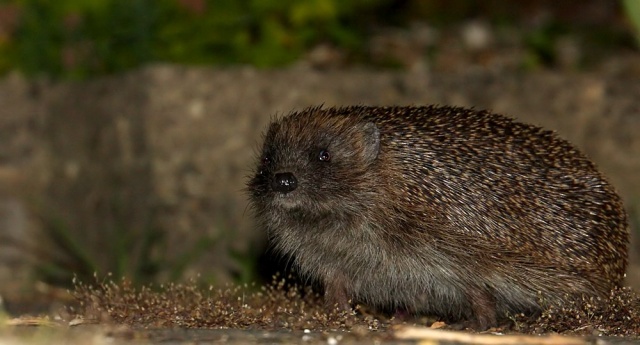 Hedgehog out for a stroll
Hedgehog out for a stroll
And the young male cub came out to see what was going on. 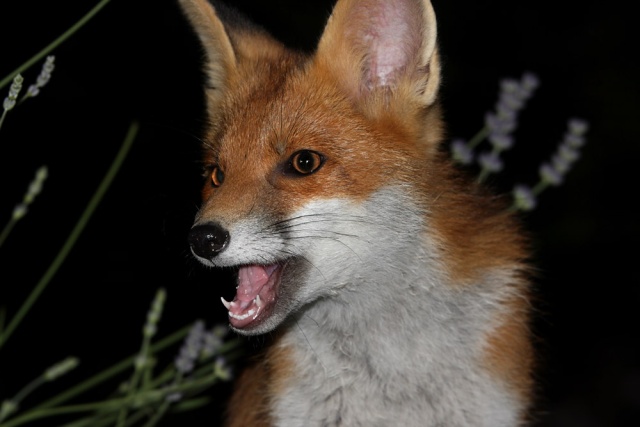 Young fox
Young fox
Camera note: all daylight shots taken with the EF 400mm f/5.6L USM lens. The hedgehog and fox were taken with the EF70-300mm 4.5-5.6 DO IS lens.
Vulpes vulpes
29 Jun 2010Lovely selection! Interesting reading on the lens technical side. :up:
RobinL
29 Jun 2010Words, thanks for the tips on in flight shots. I'll definitely be trying the manual focus. I haven't had much luck with inflights yet!
RobinL
29 Jun 2010By the way, great shots!
Words
30 Jun 2010Vulpes, thanks! I more or less stumbled on the benefits of the prime for these shots. You can do the same with the 100-400 but the focusing ring is much smaller and far less smooth.
Words
30 Jun 2010Robin, the key thing with most in-flight shots is to slightly over expose to avoid silhouetting (the sky can fool the exposure meter). I usually set the camera to about +2/3rds. Then the trick is to stay focused. With larger birds against the sky I use the autofocus in Canon's AI mode (focusing is continually adjusted automatically) and let the camera sort out the exposure. It's trickier against a mixed background (dark/light) so I tend to lock the shutter speed as well for those shots.
Words
30 Jun 2010Erwin, thanks!
SittingFox
30 Jun 2010Lark flying before the sheep – that's an unusual shot :up: I still struggle with in-flight shots. Well, for anything smaller than an eagle :whistle:
Words
1 Jul 2010Adele, I miss with plenty of them, especially the smaller birds. If they are lcose enough for decent shot they are too close to keep in frame. Kestrel… that's another matter. Why can't all birds keep stock-still in the air. It would make photography so much easier 😉
Just seen your eagle shot. Nice :up:
cakkleberrylane
3 Jul 2010A wonderful variety of great shots!
Words
3 Jul 2010Thanks Lois!
Ukwildlife
6 Jul 2010Great stuff. Emperors in flight take some doing, love the hedgie too
Words
6 Jul 2010Neil, thanks! Lots of patience needed for the emperor shot. It was a more or less a matter of judging when it would cross in front of the lens, trying to stay with it and frantically adjusting the focus.
Wulpen
19 Oct 2012Very Great shots